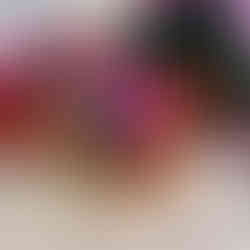SMOOCH Loose Parts & Coloring Butcher Paper Invitation
- Yasmeen Kamrani Sallam

- Feb 3, 2022
- 2 min read
Butcher paper invitations are great for being able to do more than one process. You can draw out the outline of images and create a loose parts invitation for a couple of days and then get even more use out of it by doing art.


The book Smooch!: A Picture Book Celebrating the Enduring Power of Love written by Karen Kilpatrick and illustrated Germán Blanco is perfect for reading during the month of February for Valentine's Day. The diverse characters showcase the permanent bond of love in a relevant, relatable, and reassuring way where many can see themselves within the book.

To extend the literacy experience with this two part invitation you will need butcher paper, black marker, tempera paint sticks, acrylic ice rocks, wooden hearts, flat marbles, and gems. Draw out hearts and smooches all over the butcher paper followed by inviting the child to 1st decorate the drawing with loose parts and 2nd let them color or paint it however they want.


When a child uses loose parts to create on drawn out images, shapes, or designs invitations, it gives opportunities to work on spatial awareness. As they manipulate the loose parts to fit inside, outside, or around the designs they are enhancing their fine motor skills, hand-eye coordination, and shape recognition.

Coloring is a gradual process. By offering toddler thick sturdy materials such as these tempera sticks is a great way for your child to explore and experiment. It's all about putting their hands with these tools and letting them scribble and color all over the place rather than give instructions and color in the line. While this isn‘t 100% process art driven it has great value to create an invitation such as this that makes them feel as active collaborators in their learning process. A butcher paper filled with images from the book deepens their literacy skills and comprehension to the story, makes the child pay attention to all the details in the drawings, enhance color recognition, fine motor skills, and provide more language development as they talk about the images in the book and on the paper.


















Comments